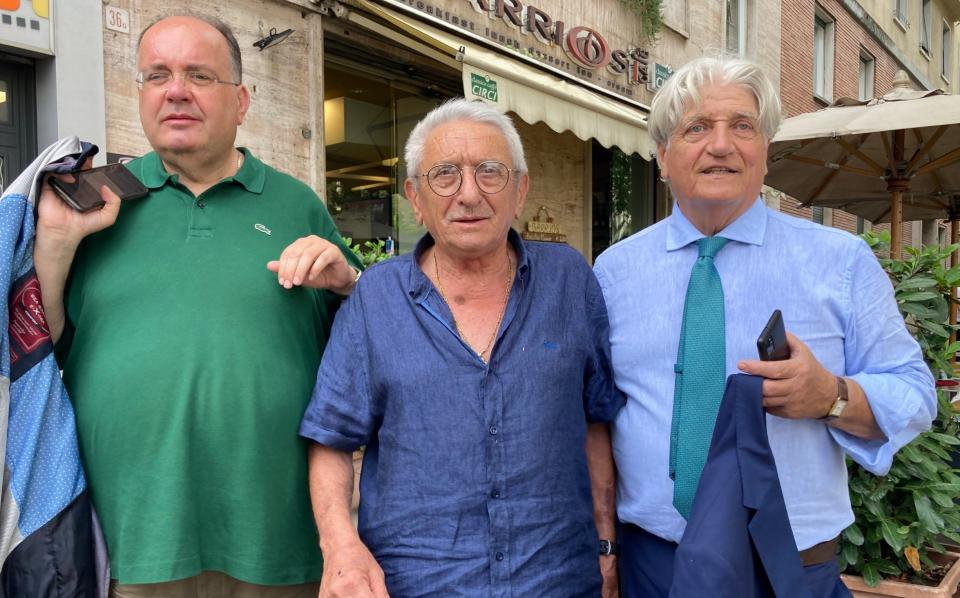Four leading experts will examine Pablo Picasso’s signature to determine whether previously unknown works are genuine prints and paintings by the artist or simply daring forgeries.
A judge in Rome has appointed experts to rule in a sensational case in which an Italian businessman living in Britain claims ownership of a long-lost collection of 36 Picasso paintings and drawings worth hundreds of millions of euros.
Marcello Santelia, 76, says his art collector father Giovanni bought the paintings and drawings from the legendary Spanish artist in the 1950s. He claims they are all genuine Picassos and told The Telegraph outside the courtroom earlier this week that they would be worth “a mind-boggling amount” if they were sold at auction.
But Italian police and prosecutors claim the collection is fake. When Mr Santelia tried to sell one of the paintings, allegedly a portrait of Picasso’s lover and muse Dora Maar, to a buyer in Dubai seven years ago, Italian police seized the paintings and drawings.
He did so openly, applying to the Italian Ministry of Culture for permission to export the painting abroad. But the request aroused the suspicion of the authorities. When police went to Mr. Santelia’s home in the town of Nocera Inferiore in 2018, they found the collection of 36 works, all allegedly by Picasso.
Mr Santelia was accused of possessing counterfeit goods in the case, which began in April.
At a hearing at the capital’s elaborate Tribunale di Roma court complex on Monday, the judge in the case, Francesco Patrone, appointed four experts to determine whether the Picassos were genuine.
One is a professor of art history, while the other three are graphologists, experts in handwriting, who will examine the signatures on the paintings and compare the long-lost collection with original Picasso works held in galleries and museums around the world.

The judge adjourned the case until February 17, giving the defendants more than six months to complete their duties.
Santelia, 76, who ran a construction company in Worcester before returning to his native Italy, strongly denies the fraud allegations against him.
He is preparing to call numerous expert witnesses in his defence to prove the authenticity of works said to have been produced by Picasso between 1943 and 1956, a period known as the Mediterranean Years.
Speaking to The Telegraph outside court, the man said: “My father was a friend of Picasso’s. The paintings were real Picassos. I just wanted to sell one of them and I applied to the Italian state for permission.
“That’s how it all started. It’s hard to predict what they’ll be worth. It would be a huge amount of money. But I don’t want to sell them. I want them to form the basis of an art foundation or a museum.”
“He has all the evidence of the provenance of the paintings. All 36 of them are genuine Picassos,” said one of his lawyers, Salvatore Nocera.
Another defence lawyer, Giuseppe Spagnuolo, said: “Court-appointed experts will spend the next six months comparing the collection with Picasso paintings from around the world. The trial went well for us – the judge accepted our expert witness Stefano Liberati, president of the international association of art experts.”
Mr Santelia claims his father bought the paintings from Picasso in the 1950s and brought them back to Italy, where they have remained ever since. The private collection is now in the hands of the Carabinieri police’s specialist art crime unit, awaiting the outcome of the case.


Santelia’s father, Giovanni, is said to have brought the works, which he had purchased from a friend of Picasso’s in the 1950s, to the family home in Nocera Inferiore.
The diary of an English traveler named Pete Smith describes Giovanni Santelia’s visit to Picasso’s home in Mougins, in southeastern France, at Christmas 1955.
On December 13 of that year, Smith wrote in his diary: “Roger is on his way to fetch Santelia Giovanni to meet Pablo.” [Picasso] “We’re in Mougins for Christmas.”
The next day, he wrote, noting that Picasso had given some of his works to his guests: “Roger, come to Mougins with Santelia Giovanni and Pablo. As usual, we all have paintings to take home.”
A number of Picasso paintings have sold at auction in the past for more than $100 million. The most expensive Picasso painting ever sold at auction is Les Femmes d’Alger (Version ‘O’), painted in 1955 and purchased at Christie’s for $179 million in 2015.